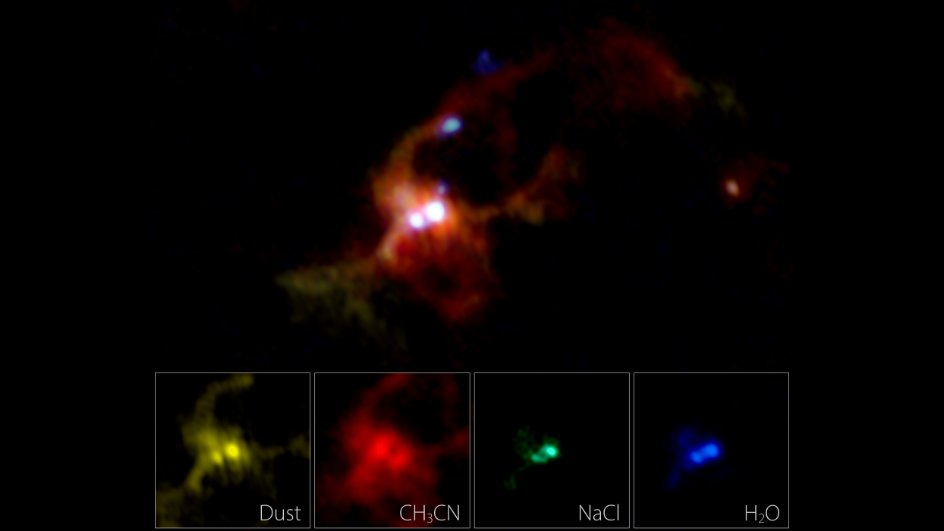#SaltyStars | Astronomers Discover Pair of Massive Stars Wrapped in Salt and #WaterVapour Clouds
weather.com/en-IN/india/sp…
(📸: ALMA (ESO/NAOJ/NRAO), Tanaka et al.)
By @kun5k
weather.com/en-IN/india/sp…
(📸: ALMA (ESO/NAOJ/NRAO), Tanaka et al.)
By @kun5k

A group of #astronomers has, only for the second time ever, discovered a pair of massive baby stars that are growing in what appears to be salty cosmic soup.
Each star seems to be engulfed in a gaseous disk that possesses molecules of heated water vapour and sodium chloride, commonly known as table salt.
The #universe is filled with countless stars—some so small, they only have one-tenth the mass of the Sun, while others so massive, they weigh more than ten times our star.
The process of massive star formation, however, remains veiled, as their humongous distance from the Earth and the fact that they are surrounded by massive clouds prevent astronomers from obtaining clear views of their formation sites.
During the examination of this stellar pair, the team detected radio emissions from a wide variety of molecules. In particular, molecules of sodium chloride (NaCl) and hot water (H2O) were found in the immediate vicinity, i.e. the circumstellar disk of each star.
Other molecules such as methyl cyanide (CH3CN), which have been commonly observed in previous studies of massive young stars, were also detected further out.
Further investigation revealed that the stars’ circumstellar disks are rotating in opposite directions, which indicates that the stars aren’t actual twins, but strangers that were born in separate clouds and paired up later.
In contrast, stars that are born as twins in a large common gaseous cloud tend to possess disks that rotate in the same direction.
Meanwhile, the presence of heated water vapour and sodium chloride, which were found to be released by the destruction of dust particles, go on to show just how hot and dynamic the discs around massive baby stars can be.
Astronomers will be able to study such molecules released from dust particles in greater detail using the next generation Very Large Array, which is currently in the planning stage.
The researchers anticipate that by using more developed technology to closely explore the hot disks made of sodium chloride and hot water vapor, they can even obtain clues to understand the origin of our Solar System.
Could salt and water—the two essential ingredients of human food—be among the fundamental building blocks that cooked up the universe too?
• • •
Missing some Tweet in this thread? You can try to
force a refresh














